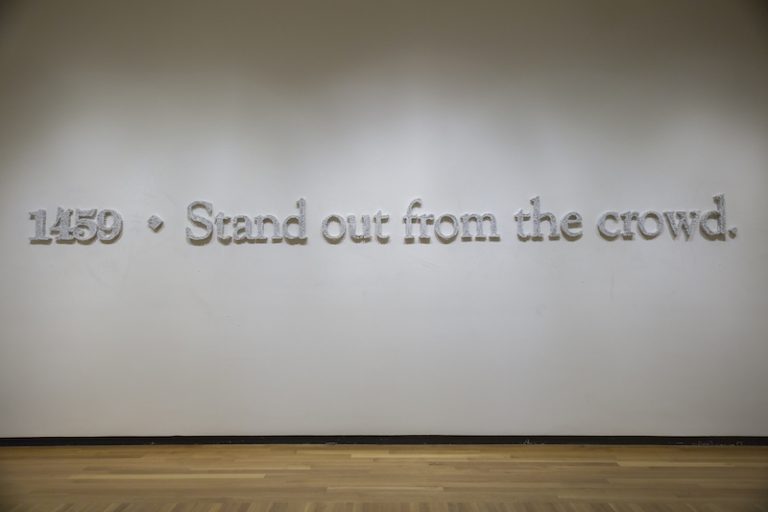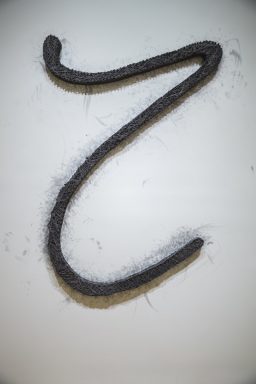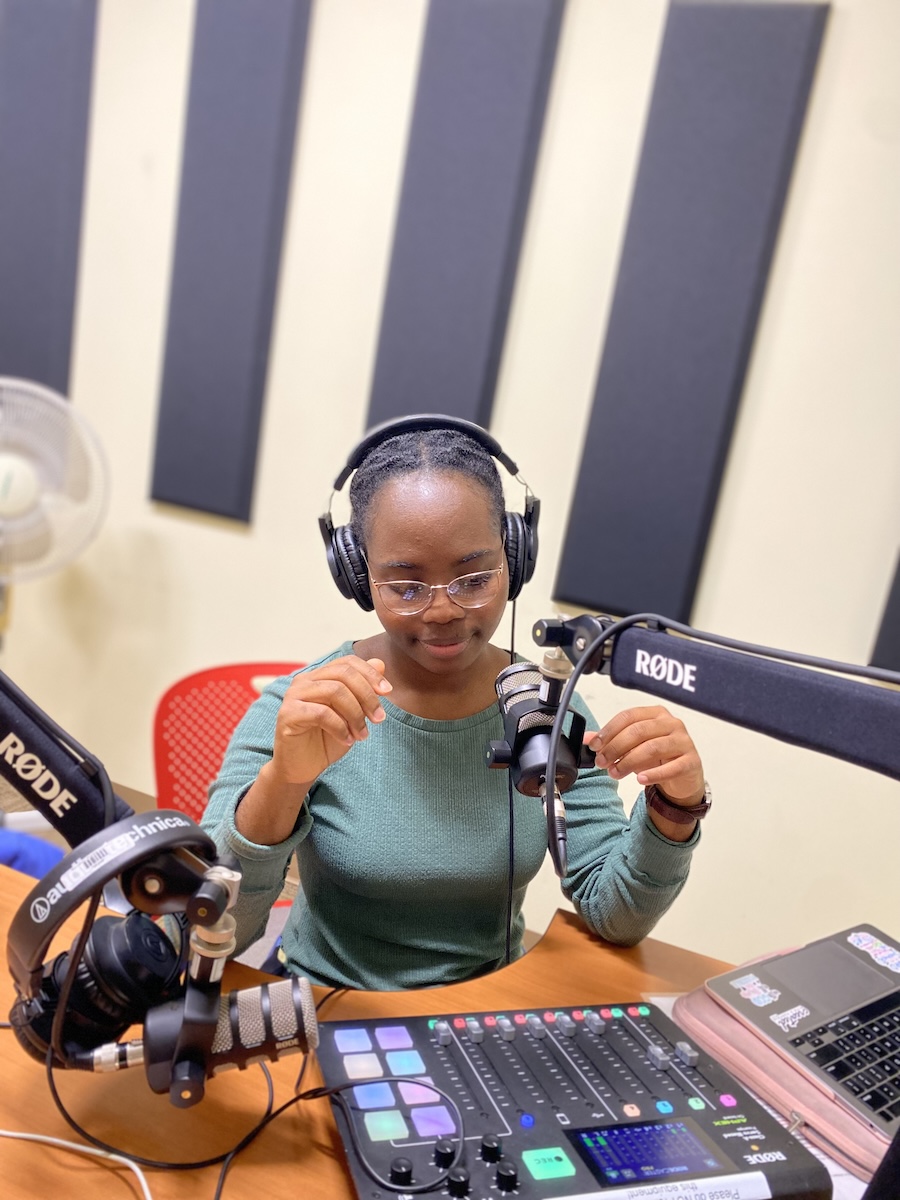Site-Specific Drawings in New Museum Show Stretch Language
By Rebecca GoldfineWith a team of fifteen Bowdoin student volunteers and his two assistants, and armed with power tools, screws, paint, rubber bands and graphite powder, Lewis undertook the significant task of creating two large site-specific drawings for the museum.
The video above captures part of the process, from Feb. 15 to 18, of making one of the pieces on a museum wall.
Lewis’s wall drawings are part of the museum’s current exhibition of American art, Second Sight: The Paradox of Vision in Contemporary Art (open through June 3). The show, which gathers the work of twenty-two contemporary artists, explores “the significance of what we cannot see, whether by choice, habit, or physiological limitations, in the world around us,” according to curator Ellen Tani, who is Bowdoin’s current Andrew W. Mellon Postdoctoral Curatorial Fellow. One such area of artistic investigation is language.


Lewis’s other site-specific drawing, Rubber, appears as an abstract gesture but represents a form of language: it is the Gregg shorthand character for “rubber,” made of black graphite-coated rubber bands. Gregg shorthand is a stenographic system for recording spoken language; its cursive-like form is actually phonetic, each section of a line corresponding to a sound.
“[Rubber] is concerned with the display of content, the actual content of the writing system as abstraction, as shape, as form, and as language and as sound,” Lewis said in an interview with Tani. “One of the main reasons why I like that drawing is because it is a surface piece. It is about the here and now, in your body looking and seeing and reading. It doesn’t take you anywhere else, it is about itself, and it is almost like a deep sigh — or a tense sigh.”



